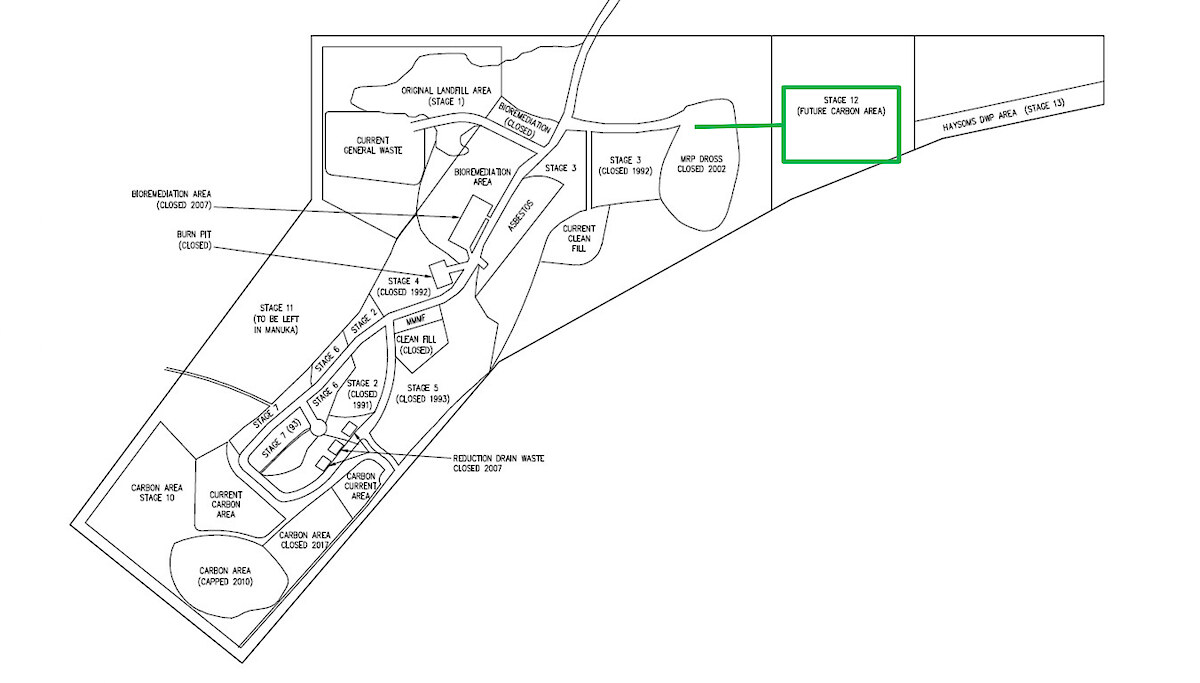The New Zealand Aluminium Smelter (NZAS) site on the Tiwai Peninsula has been identified by the Ministry for the Environment as a highly contaminated Hazardous Activities and Industries List (HAIL) site[1].
Industries listed as a HAIL site are those that are likely to cause land contamination resulting from hazardous substance use, storage, or disposal. The activities at Tiwai Smelter meet all three criteria: the use, storage, and disposal of a range of hazardous substances.
The purpose of this report is to explore the range of potential contaminants located at Tiwai Point, that are the direct result of Tiwai Aluminium Smelter activities. This report has been based around information provided by Environment Southland’s Briefing Note (February 2021) and information gleaned from various news articles, reports, and newsletters. Information is focused on contaminants that have the potential to infiltrate soils, groundwater, and pollute the ocean. Air-borne pollutants are not covered.
Current understanding of the range and extent of soil and water contamination of Tiwai Point is limited. However, the aim of this report is to get an initial understanding of the potential range of contaminants located in the landfill, within onsite storage facilities, in the soil, and in underlying gravels and groundwater.
 2019 map of the Tiwai Landfill (NZAS).Understanding Tiwai as a contaminated site is urgent, irrespective of how long the smelter continues to operate. Many of the contaminants are persistent in the environment and will remain hazardous for generations to come if not mitigated in some way. The future of Tiwai Point as a geological feature is also uncertain. Tiwai Point is low-lying and sea level rise due to global warming is a very real threat. In addition, the peninsula is largely made up of gravel deposits, which are easily eroded. A further risk is the location of the peninsula in a known tsunami risk zone.
2019 map of the Tiwai Landfill (NZAS).Understanding Tiwai as a contaminated site is urgent, irrespective of how long the smelter continues to operate. Many of the contaminants are persistent in the environment and will remain hazardous for generations to come if not mitigated in some way. The future of Tiwai Point as a geological feature is also uncertain. Tiwai Point is low-lying and sea level rise due to global warming is a very real threat. In addition, the peninsula is largely made up of gravel deposits, which are easily eroded. A further risk is the location of the peninsula in a known tsunami risk zone.
Media focus has largely been on landfilled dross and the precarious storage of Spend Cell Lining (SCL). However, Tiwai Point contains a cocktail of contaminants that would be catastrophic for the coastal environment if current containment were breached.
Download the report
Tiwai Point - contaminated site: Report in response to ES briefing note (PDF, 5.11 MB)
[1] https://www.mfe.govt.nz/land/hazardous-activities-and-industries-list-hail
